Phloroglucinol Dihydrate CAS 6099-90-7 Assay 99.0~101.0% EP Standard
Shanghai Ruifu Chemical Co., Ltd. is the leading manufacturer of Phloroglucinol Dihydrate (CAS: 6099-90-7) with high quality. Ruifu Chemical can provide worldwide delivery, competitive price, excellent service, small and bulk quantities available. Purchase Phloroglucinol Dihydrate, Please contact: alvin@ruifuchem.com
| Chemical Name | Phloroglucinol Dihydrate |
| Synonyms | Phloroglucin Dihydrate; 1,3,5-Trihydroxybenzene Dihydrate; 1,3,5-Trihydroxybenzene.2H2O; Benzene-1,3,5-Triol Dihydrate; m-Trihydroxybenzene |
| Stock Status | In Stock, Commercial Production |
| CAS Number | 6099-90-7 |
| Molecular Formula | C6H6O3·2H2O |
| Molecular Weight | 162.14 g/mol |
| Melting Point | 216.0~221.0℃ (≤2.0℃) |
| Density | 1.46 |
| Sensitive | Light Sensitive |
| Stability | Stable. Incompatible with Acid Chlorides, Acid Anhydrides, Bases, Oxidizing Agents. Combustible. |
| COA & MSDS | Available |
| Sample | Available |
| Shelf Life | 2 Years When Properly Stored |
| Origin | Shanghai, China |
| Brand | Ruifu Chemical |
| Items | Specifications | Results |
| Appearance | White or Almost White Powder | White Powder |
| Solubility | Sparingly Soluble in Water, Freely Soluble in Ethanol (96%), Practically Insoluble in Methylene Chloride. |
Complies |
| Identification A | Infrared Absorption Spectrophotometry (2.2.24) | Complies |
| Identification B | The principal spot in the chromatogram obtained with the test solution is similar in position and size to the reference solution. |
Complies |
| Identification C | Loss on Drying (See Tests) | Complies |
| Appearance of Solution | Clear and Not More Intensely Colored Than Reference Solution BY5 (2.2.2, Method II) |
Complies |
| pH of Solution | 4.0~6.0 | 5.5 |
| Related Substances | ||
| Impurity A | ≤0.15% | Not Detected |
| Impurity D | ≤0.15% | Not Detected |
| Impurity E | ≤0.15% | Not Detected |
| Impurity K | ≤0.15% | Not detected |
| Impurity L | ≤0.15% | Not Detected |
| Impurity I | ≤0.15% | Not Detected |
| Unspecified Impurity | ≤0.10% | 0.04% |
| Total Impurities | ≤0.30% | 0.04% |
| Chlorides | ≤200 ppm | <200 ppm |
| Sulfates | ≤500 ppm | <500 ppm |
| Heavy Metals | ≤20ppm | <20ppm |
| Melting Point | 216.0~221.0℃ (≤2.0℃) (on Dried Basis) | 219.4~220.6℃ |
| Loss on Drying | 20.0 to 23.0% | 21.60% |
| Sulfated Ash | ≤0.10% | 0.04% |
| Residual Solvent | 1,2,4-Trimethyl benzene ≤20 ppm | Not Detected |
| Assay | 99.0~101.0% (on the Dried Basis) | 100.10% |
| Conclusion | The product has been tested and complies with Ph. Eur. 9 | |
Package: Bottle, Aluminium foil bag, 25kg/Cardboard Drum, or according to customer's requirement.
Storage Condition: Light sensitive. Keep the container tightly closed and store in a clean, cool, dry and well-ventilated warehouse away from incompatible substances. Keep away from strong, direct light and moisture, avoid fire and heat. Incompatible with acid chlorides, acid anhydrides, bases and oxidizing agents.
Shipping: Deliver to worldwide by air, by FedEx / DHL Express. Provide fast and reliable delivery.
Phloroglucinolum dihydricum
C6H6O3,2H2O Mr 162.1
[6099-90-7]
DEFINITION
Benzene-1,3,5-triol dihydrate.
Content: 99.0 per cent to 101.0 per cent (dried substance).
CHARACTERS
Appearance: white or almost white powder.
Solubility: sparingly soluble in water, freely soluble in ethanol (96 per cent), practically insoluble in methylene chloride.
IDENTIFICATION
A. Infrared absorption spectrophotometry (2.2.24).
Preparation: previously dry the substance to be examined in an oven at 105℃.
Comparison: anhydrous phloroglucinol CRS.
B. Thin-layer chromatography (2.2.27).
Test solution. Dissolve 0.20 g of the substance to be examined in methanol R and dilute to 10 mL with the same solvent.
Reference solution. Dissolve 0.20 g of anhydrous phloroglucinol CRS in methanol R and dilute to 10 mL with the same solvent.
Plate: TLC silica gel F254 plate R.
Mobile phase: anhydrous formic acid R, hexane R, ethyl acetate R (2:37.5:62.5 V/V/V).
Application: 10 μL.
Development: over 2/3 of the plate.
Detection: examine in ultraviolet light at 254 nm.
Results: the principal spot in the chromatogram obtained with the test solution is similar in position and size to the principal spot in the chromatogram obtained with the reference solution.
C. Loss on Drying (see Tests).
TESTS
Solution S. Dissolve 2.50 g in ethanol (96 per cent) R and dilute to 25 mL with the same solvent.
Appearance of solution. Solution S is clear (2.2.1) and not more intensely coloured than reference solution BY5 (2.2.2, Method II).
pH (2.2.3): 4.0 to 6.0.
Dilute 10 mL of solution S to 100 mL with carbon dioxide-free water R.
Related substances. Liquid chromatography (2.2.29). Prepare the solutions immediately before use and protect from light.
Solvent mixture : mobile phase B, mobile phase A (10:90 V/V).
Test solution. Dissolve 50 mg of the substance to be examined in the solvent mixture and dilute to 10.0 mL with the solvent mixture.
Reference solution (a). Dilute 1.0 mL of the test solution to 100.0 mL with the solvent mixture. Dilute 1.0 mL of this solution to 10.0 mL with the solvent mixture.
Reference solution (b). Dissolve 6 mg each of resorcinol R (impurity B), phloroglucide R (impurity D) and pyrogallol R (impurity A) in 10 mL of the solvent mixture, add 2 mL of the test solution and dilute to 20.0 mL with the solvent mixture. Dilute 1.0 mL of this solution to 50.0 mL with the solvent mixture.
Reference solution (c). Dissolve 4 mg each of pyrogallol R (impurity A), phloroglucide R (impurity D), benzene-1,2,4-triol R (impurity E), 2,6-dichlorophenol R (impurity I), 4-chlororesorcinol R (impurity K) and 3,5-dichloroaniline R (impurity L) in 10 mL of the solvent mixture and dilute to 20.0 mL with the solvent mixture.
Reference solution (d). Dissolve 10 mg of the substance to be examined in 10 mL of the solvent mixture, add 1.0 mL of reference solution (c) and dilute to 20.0 mL with the solvent mixture.
Column:
- size: l = 0.25 m, Ø = 4.0 mm;
- stationary phase: end-capped octadecylsilyl silica gel for
chromatography with embedded polar groups R (5 μm)
Mobile phase :
-mobile phase A: 1.36 g/L solution of potassium dihydrogen phosphate R previously adjusted to pH 3.0 with phosphoric acid R;
-mobile phase B: acetonitrile R;
Time (min) Mobile phase A (per cent V/V) Mobile phase B (per cent V/V)
0 - 9 100 0
9 - 15 100 → 50 0 → 50
15 - 25 50 → 20 50 → 80
25 - 30 20 80
Flow rate: 1.0 mL/min.
Detection: spectrophotometer at 265 nm.
Injection: 20 μL of the test solution and reference solutions (a), (b) and (d).
Identification of impurities: use the chromatogram obtained with reference solution (d) to identify the peaks due to impurities A, D, E, I, K and L.
Relative retention with reference to phloroglucinol
(retention time = about 12 min): impurity E = about 0.7;
impurity A = about 0.9; impurity D = about 1.3;
impurity B = about 1.35; impurity K = about 1.5;
impurity I = about 1.8; impurity L = about 2.0.
System suitability: reference solution (b):
-resolution: minimum 2.5 between the peaks due to impurity A and phloroglucinol; minimum 4.0 between the peaks due to impurities D and B.
Limits:
-correction factors: for the calculation of content, multiply the peak areas of the following impurities by the corresponding correction factor: impurity A = 0.6;
impurity D = 0.2; impurity E = 0.7; impurity I = 0.6;
impurity K = 0.6; impurity L = 0.4;
-impurities A, D, E, I, K, L: for each impurity, not more than
1.5 times the area of the principal peak in the chromatogram
obtained with reference solution (a) (0.15 per cent);
-unspecified impurities: for each impurity, not more than the area of the principal peak in the chromatogram obtained with reference solution (a) (0.10 per cent);
-total: not more than 3 times the area of the principal peak in the chromatogram obtained with reference solution (a) (0.3 per cent);
-disregard limit: 0.5 times the area of the principal peak in
the chromatogram obtained with reference solution (a) (0.05 per cent).
Chlorides (2.4.4): maximum 200 ppm.
Dilute 2.5 mL of solution S to 15 mL with water R.
Sulfates (2.4.13): maximum 500 ppm.
Dilute 3 mL of solution S to 15 mL with distilled water R.
Loss on Drying (2.2.32): 20.0 per cent to 23.0 per cent, determined on 1.000 g by drying in an oven at 105℃.
Sulfated ash (2.4.14): maximum 0.1 per cent, determined on 1.0 g.
ASSAY
Dissolve 0.600 g in 50 mL of water R. Titrate with 1 M sodium hydroxide, determining the end-point potentiometrically (2.2.20).
1 mL of 1 M sodium hydroxide is equivalent to 63.05 mg of C6H6O3.
STORAGE
Protected from light.
IMPURITIES
Specified impurities: A, D, E, I, K, L.
Other detectable impurities (the following substances would, if present at a sufficient level, be detected by one or other of the tests in the monograph. They are limited by the general acceptance criterion for other/unspecified impurities and/or by the general monograph Substances for pharmaceutical use (2034). It is therefore not necessary to identify these impurities for demonstration of compliance. See also 5.10. Control of impurities in substances for pharmaceutical use): B, O.
A. benzene-1,2,3-triol (pyrogallol),
B. benzene-1,3-diol (resorcinol),
D. 2,3',4,5',6-biphenylpentol (phloroglucide),
E. benzene-1,2,4-triol,
I. 2,6-dichlorophenol,
K. 4-chlorobenzene-1,3-diol (4-chlororesorcinol),
L. 3,5-dichloroaniline,
O. 4,6-dichlorobenzene-1,3-diol (4,6-dichlororesorcinol).
How to Purchase? Please contact Dr. Alvin Huang: sales@ruifuchem.com or alvin@ruifuchem.com
15 Years Experience? We have more than 15 years of experience in the manufacture and export of a wide range of high quality pharmaceutical intermediates or fine chemicals.
Main Markets? Sell to domestic market, North America, Europe, India, Korea, Japanese, Australia, etc.
Advantages? Superior quality, affordable price, professional services and technical support, fast delivery.
Quality Assurance? Strict quality control system. Professional equipment for analysis include NMR, LC-MS, GC, HPLC, ICP-MS, UV, IR, OR, K.F, ROI, LOD, MP, Clarity, Solubility, Microbial limit test, etc.
Samples? Most products provide free samples for quality evaluation, shipping cost should be paid by customers.
Factory Audit? Factory audit welcome. Please make an appointment in advance.
MOQ? No MOQ. Small order is acceptable.
Delivery Time? If within stock, three days delivery guaranteed.
Transportation? By Express (FedEx, DHL), by Air, by Sea.
Documents? After sales service: COA, MOA, ROS, MSDS, etc. can be provided.
Custom Synthesis? Can provide custom synthesis services to best fit your research needs.
Payment Terms? Proforma invoice will be sent first after confirmation of order, enclosed our bank information. Payment by T/T (Telex Transfer), PayPal, Western Union, etc.
Hazard Symbols Xi - Irritant
Risk Codes 36/37/38 - Irritating to eyes, respiratory system and skin.
Safety Description S37/39 - Wear suitable gloves and eye/face protection
S26 - In case of contact with eyes, rinse immediately with plenty of water and seek medical advice.
S36 - Wear suitable protective clothing.
S24/25 - Avoid contact with skin and eyes.
WGK Germany 2
RTECS DC4662500
TSCA Yes
HS Code 2907299090
P264: Wash skin thoroughly after handling.
P280: Wear protective gloves/ eye protection/ face protection.
P337 + P313: If eye irritation persists: Get medical advice/ attention.
P305 + P351 + P338: IF IN EYES: Rinse cautiously with water for several minutes. Remove contact lenses, if present and easy to do. Continue rinsing.
P302 + P352: IF ON SKIN: Wash with plenty of soap and water.
P332 + P313: If skin irritation occurs: Get medical advice/ attention.
P362: Take off contaminated clothing and wash before reuse.
Phloroglucinol Dihydrate (CAS: 6099-90-7) is used as analytical reagent used as pharmaceutical, biological reagent, dye, can also be used to synthesize 5,7-dihydroxyflavone used as biological reagent, dye, and used to test vanillin, lignin, determination of sugar aldehyde, pentose, etc. Phloroglucinol Dihydrate is utilized in the preparation of active pharmaceutical ingredients such as flopropione.
-
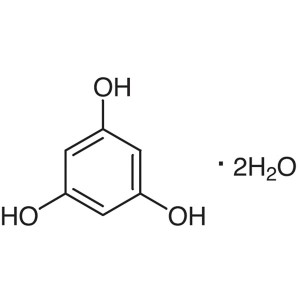
Phloroglucinol Dihydrate CAS 6099-90-7 Assay 99...
-
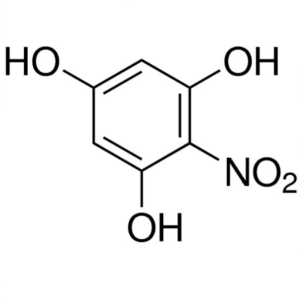
2-Nitrophloroglucinol CAS 16600-92-3 Purity >98...
-
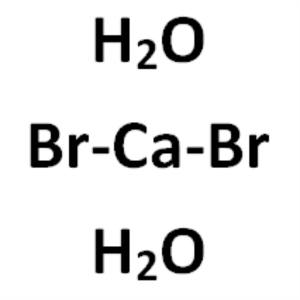
Calcium Bromide Dihydrate CAS 22208-73-7 Purity...
-
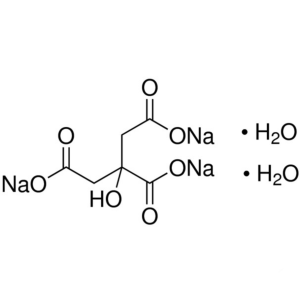
Sodium Citrate Dihydrate CAS 6132-04-3 Purity >...
-
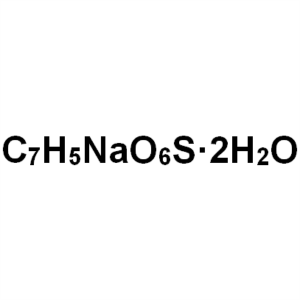
Sodium Sulfosalicylate Dihydrate CAS 1300-61-4 ...
-
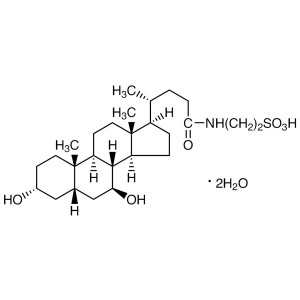
Tauroursodeoxycholic Acid Dihydrate CAS 14605-2...

